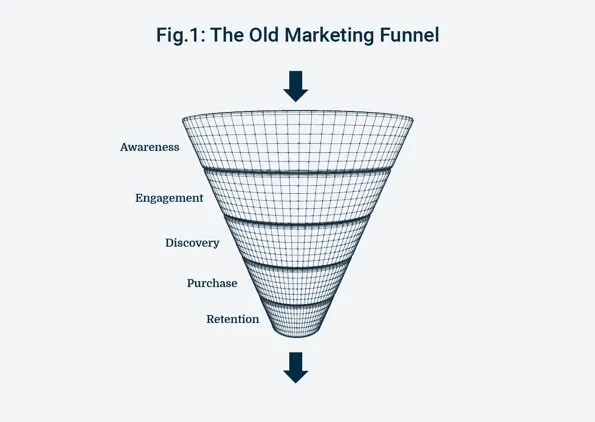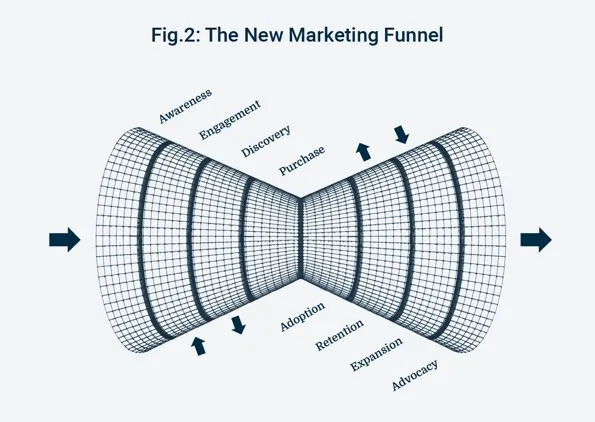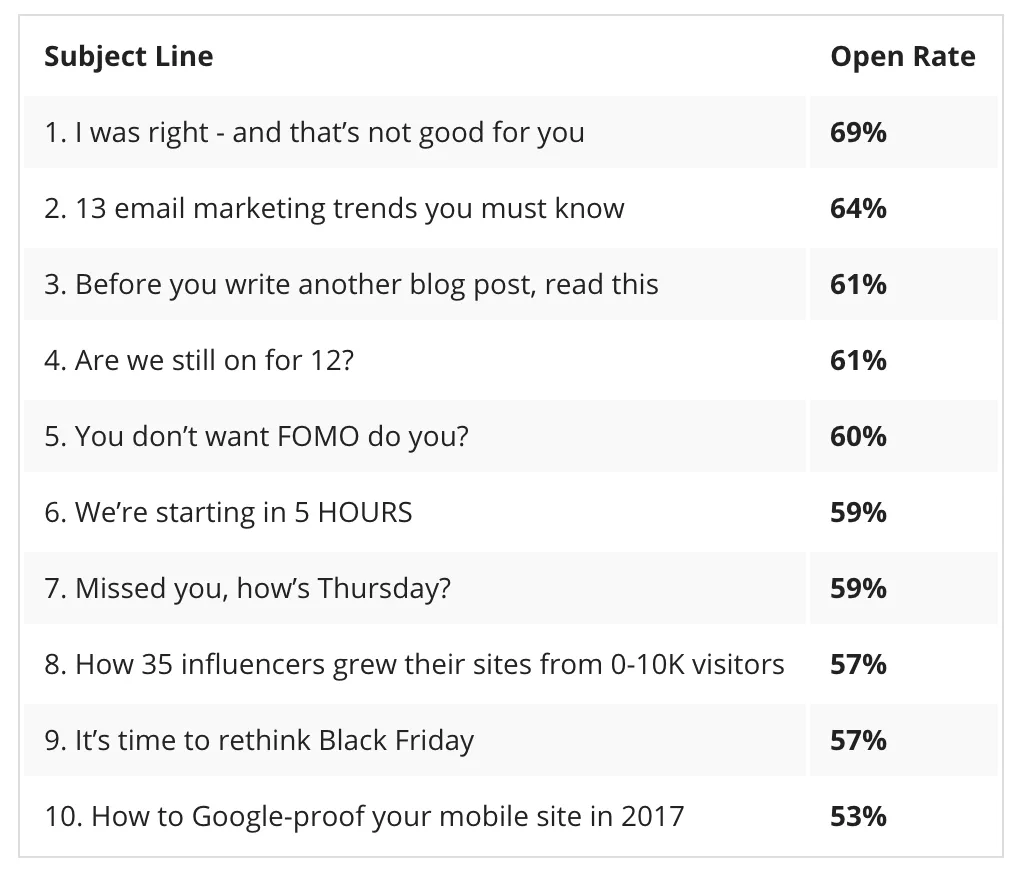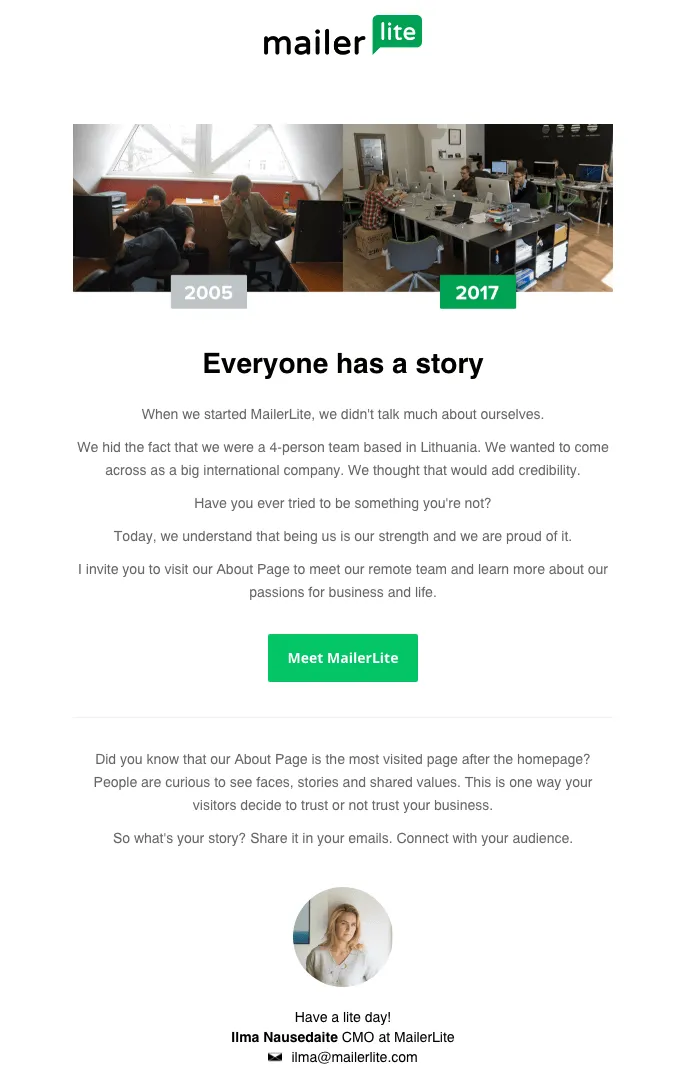With the right list, anyone can get into consumers’ inboxes. But, in today’s world where consumers are inundated with seemingly endless subscriptions and promotions, being at the top of that inbox, and being lucky enough to have your email opened, is where all marketers strive to be.
This is partially due to the fact that the sheer number of emails sent on a daily basis is massive and only continues to grow. In 2020, 300.4 billion emails were sent and received every day.
The other side of the coin is that the traditional marketing funnel is no longer effective. Unlike the methodology most marketers are familiar with, this new marketing funnel is not linear, but rather one that uses a 360° approach to the customer lifecycle.
Campaign Monitor describes and depicts the new funnel below:
“A new marketing funnel has emerged and merges pre-purchase and post-purchase stages to present a complete view of the entire customer lifecycle. Multi-channel, multi-touch, multi-path customer journeys are the new marketing funnel.”


Consumers don’t follow a “traditional pathway” and email campaigns shouldn’t either.
Here are 3 main aspects your email campaign needs to stand out in today’s inbox.
Visually engaging
This goes without saying. From the first look to the overall layout, your email has to be interesting. While you might think the first look refers to the header image or header text in the email, the first look your recipients see is that one sentence that pops up in their inbox: the subject line.
Starting with a captivating subject line that entices your reader to open your email can be hugely successful in engaging a customer. 47% of people open an email based on the subject line, AND 69% of recipients report emails as spam based solely on the subject line.
Sumo, a website growth company, did a test on their own subject lines to determine which were most effective.

As highlighted above, subject lines that allude to providing knowledge the recipient doesn’t already have (“I was right – and that’s not good for you”) and subject lines that have a sense of urgency (“We’re starting in 5 HOURS”) performed well. These subject lines make a recipient think, “I need to open this” rather than just passing over it without a second (or even a full) thought. Drawing your reader in with an engaging subject line will go a long way in running successful email campaigns.
Once your subject line is read and your email is (hopefully) opened, the next step is to keep your readers engaged. The most obvious way to do this: make your emails visually interesting. Whether it’s a large graphic, great color contrasts, or engaging header text, to keep a recipient reading your email, it must keep their interest.
Learn how to implement email marketing automation into your strategy
While some emails might not be the standard of what your company can realistically send on a weekly basis, creating something that’s visually interactive makes an email interesting and worth spending time on (and let’s be honest, there’s also something irresistible about pushing a button—or, flipping a switch). Keeping readers in your email leads them to (best case) click on your call-to-action or (worse case) remember your email, causing them to search for your company later or tell someone else about your email or product.
Personalized
Consumers are too busy to spend time on something that’s not tailored specifically to them. As marketers who have access to a plethora of marketing automation platforms, so there’s no reason why you shouldn’t be using what you know about your customers to provide them with tailored content.
New machine learning and data science-based features and platforms will give email marketers the ability to harness their content and data to prophesize relevant information to mass audiences in a personal way.”
While this trend may continue to become even more prevalent in the future, it’s popular and necessary now and goes beyond placing “Hello, NAME,” in the subject line of an email. Personalization can be as simple as paying attention to the kinds of emails your recipients are opening and segmenting them into lists that will provide more of the correspondence they are interested in.
We’ve all seen “in review” emails, whether it be over a month, year, or the life of the membership. These emails are extremely personalized and do more for brand loyalty or awareness than they do for selling a product or providing company information. These kinds of emails are all about the feel-good factor. Instead of a brand trying to pitch something, they are merely providing the recipient with information that is interesting or relevant to them.
This kind of email is great for certain industries but doesn’t work at all in other settings. Personalization should start with examining the types of information you have. Does your SaaS platform track any sort of login or savings stats? Does your website track what types of blogs visitors read? Try and form personalization concepts around the data you already have access to. Know what’s important to your recipients and personalize their experience to fit this.
Emotional connection
We all love a good story, and an email is no different. Whether it’s a story about your company, a product, a new service, or even a mistake, authenticity and creating a personal connection go a long way.
This email from MailerLite does a great job of pulling back the curtain and bringing a relatable, human element to their readers.

Though every email with a “human connection” element doesn’t need to be as raw as this, this approach goes a long way in inspiring brand loyalty, brand trust, and a feeling of relatability to the company.
Contact Pyxl
Creating and deploying great email campaigns are a lot of work, but the rewards of successful campaigns are well worth the time and effort. Don’t know where to start or are too busy to make it happen? Reach out to us! We have lots of experience sending out-of-this-world emails; reach out to us today!
Updated: Nov 15, 2024
 Taylor Farace
Taylor Farace Kati Terzinski
Kati Terzinski Erin Murray
Erin Murray